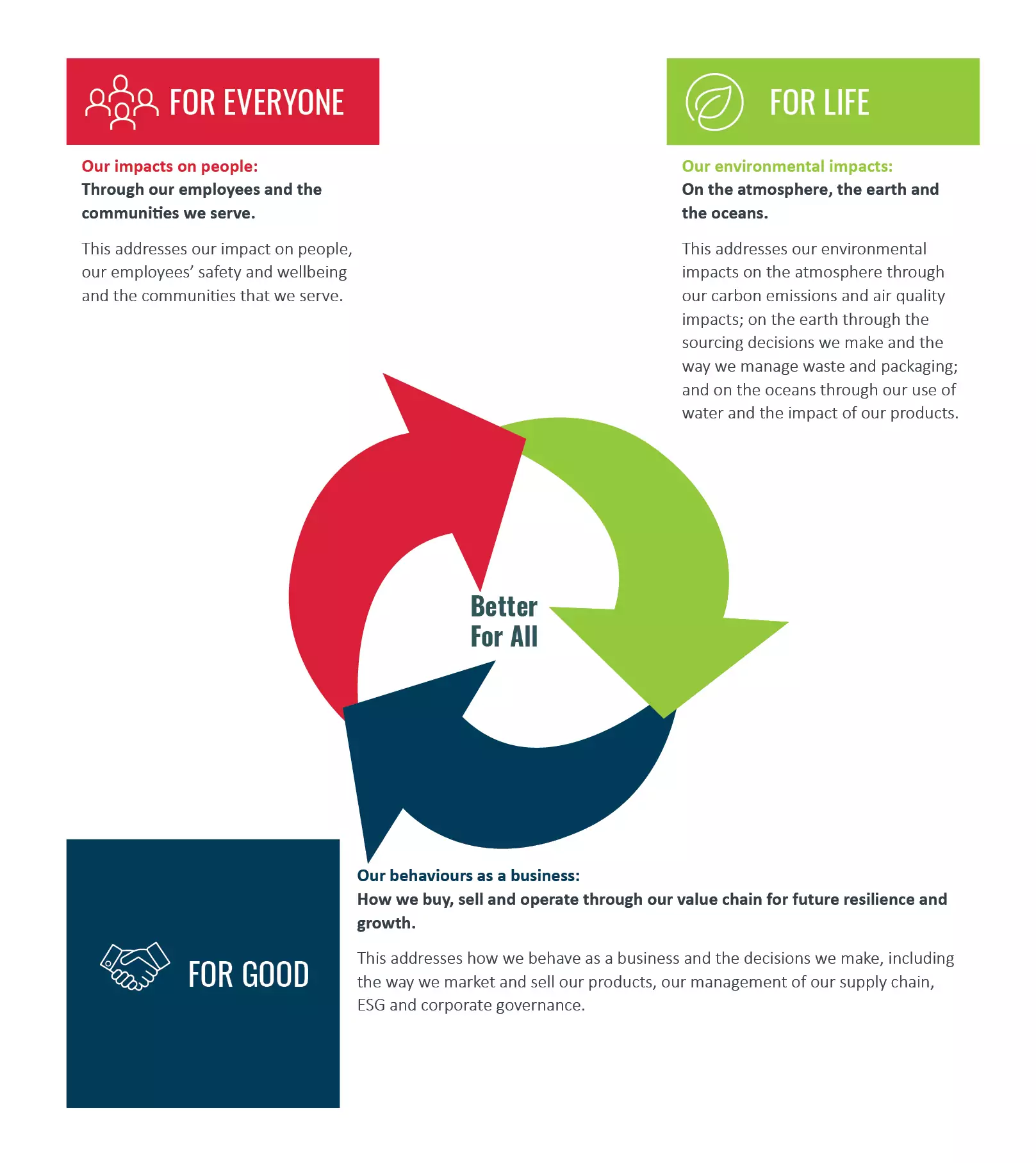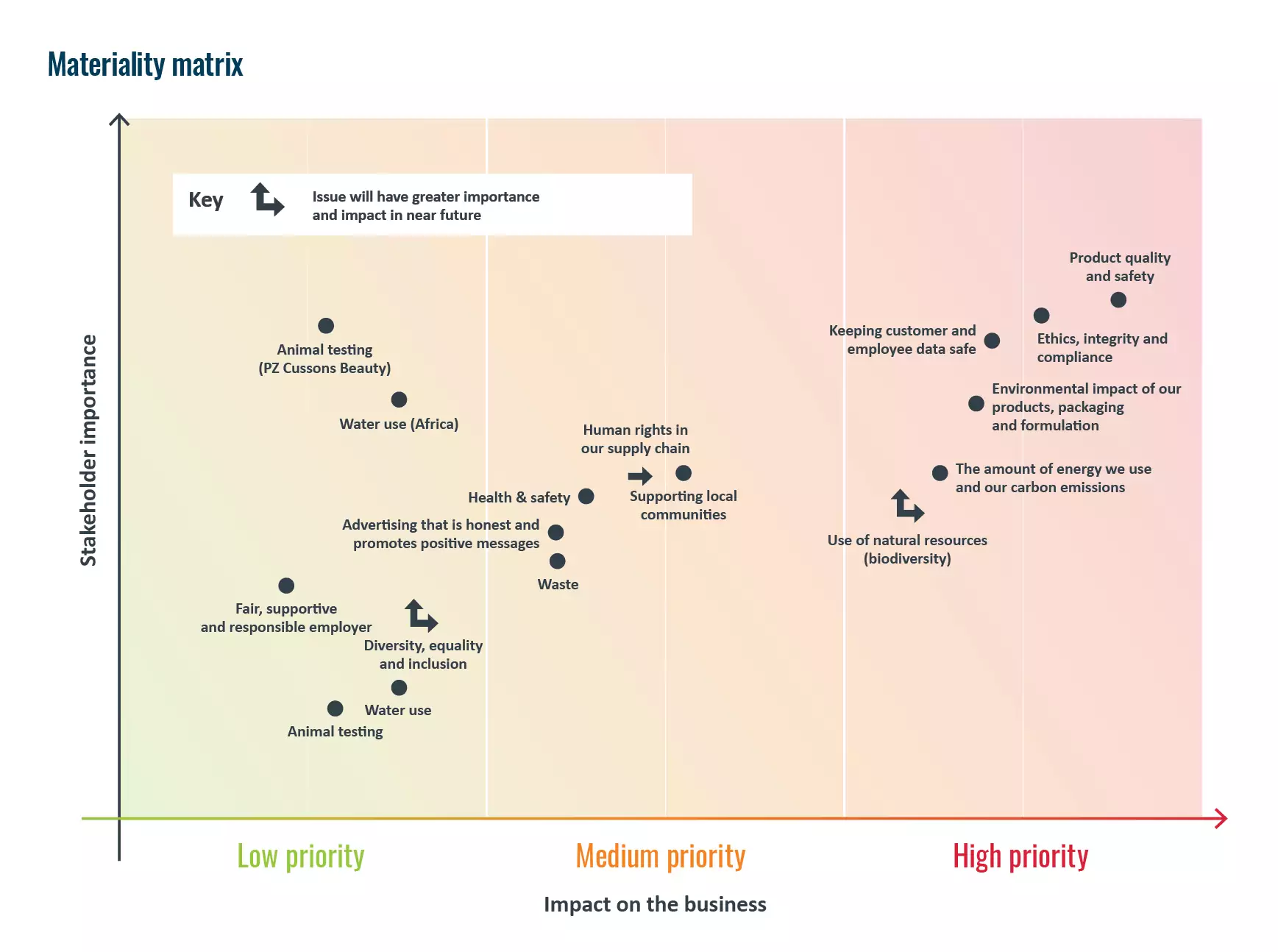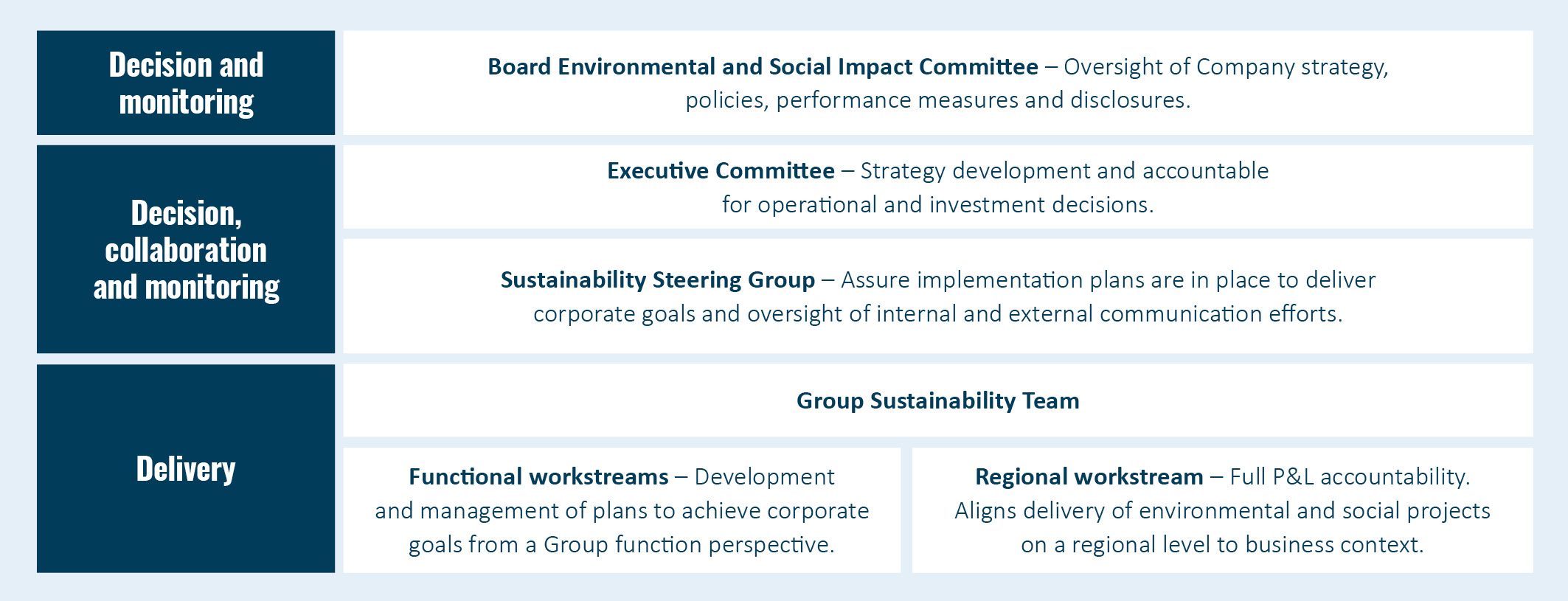Materiality
Materiality is an important part of engaging with our stakeholders and ensuring that their concerns are reflected in our approach to sustainability, the issues we focus on and the goals we set.
We have carried out a materiality review to understand our most important social and environmental impacts, and how different stakeholder groups – customers, consumers, suppliers, employees and investors – viewed these impacts.
The insights from the materiality analysis have informed our strategy and targets. They will continue to shape our activities at a global and country level.
Governance
The Board provides oversight of our sustainability strategy through the Environmental and Social Impact (ES) Committee. This sub-committee reviews and monitors the Company’s strategy, policies, performance metrics and disclosures related to environmental and social impact.
The Executive Committee is responsible for developing the sustainability strategy and making operational and investment decisions to support its delivery. The Executive Committee works in close alignment with the ES Committee, which approves the strategic direction and ensures accountability at the Board level.
Reporting to the Executive Committee, the Sustainability Steering Group plays a key role in reviewing plans and tracking progress against our corporate sustainability KPIs. It ensures effective execution of our environmental and social strategy across the Group and individual markets, while also overseeing internal and external communications on sustainability.
To support delivery at the operational level, we have established functional and regional workstreams led by the Group Sustainability Team. These workstreams are responsible for developing and implementing business unit and function-specific initiatives.
The Group Sustainability Team reports to the Global Head of R&D and, ultimately, to the Chief Growth and Marketing Officer. This structure is designed to embed sustainability more deeply within our business strategy, enhance brand value, and drive operational efficiencies.



